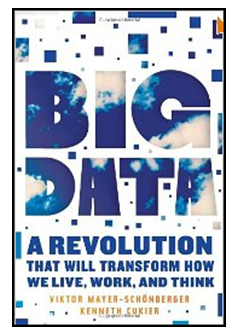Dr. Watson Says: |
 |
| ...you should creatively look for new data to collect that will change how you run your supply chain. |
|
What Do You Say?
|
|
|
|
It is hard to go a day without hearing about a “Big Data” project. Subsequently, supply chain managers are under pressure to find value with a Big Data project.
But, what is Big Data?
Big Data seems to be defined in a couple of different ways.
 One definition focuses on the fact that Big Data can can break traditional data storage capability. Gartner and others use three V’s to describe this. There is a high volume of data (millions of gigabytes), it comes at you at high velocity (like thousands of sensors feeding data every millisecond), or it has a lot of variety (like social media feeds). One implication of this definition is that you will need new technology to handle and process the data. But, if social media feeds will help you forecast demand, there is technology to help you. One definition focuses on the fact that Big Data can can break traditional data storage capability. Gartner and others use three V’s to describe this. There is a high volume of data (millions of gigabytes), it comes at you at high velocity (like thousands of sensors feeding data every millisecond), or it has a lot of variety (like social media feeds). One implication of this definition is that you will need new technology to handle and process the data. But, if social media feeds will help you forecast demand, there is technology to help you.
The second definition, from the book, Big Data (pictured) is that Big Data defines the full universe of whatever you are studying. So, instead of having to sample 10 of your trucks to see how you are doing, you have sensors on every truck, and you know what all the trucks are doing at all times. With this definition, you don’t necessarily create a lot of data (but you easily can), you just need the complete set. One implication of this definition is that a comprehensive set of data can help you find outliers and understand rare but expensive events.
For the third definition comes from the popular press that uses the term Big Data to simply mean the creative use of data to answer a problem that we couldn't before. That is, if a company collects a new set of data (and maybe it is a small set of data), but answers a unique question, the project gets labeled a "Big Data" project. One implication of this definition is that you should creatively look for new data to collect that will change how you run your supply chain.
There are probably other good definitions out there as well. But, I don’t think we need to narrow the definition down to one. Instead, what is more important is that you realize that there are many ways to use Big Data in your supply chain.
Final Thoughts
Data is becoming easier to collect and analyze. What new set of data should you collect and analyze to best change your supply chain?
|